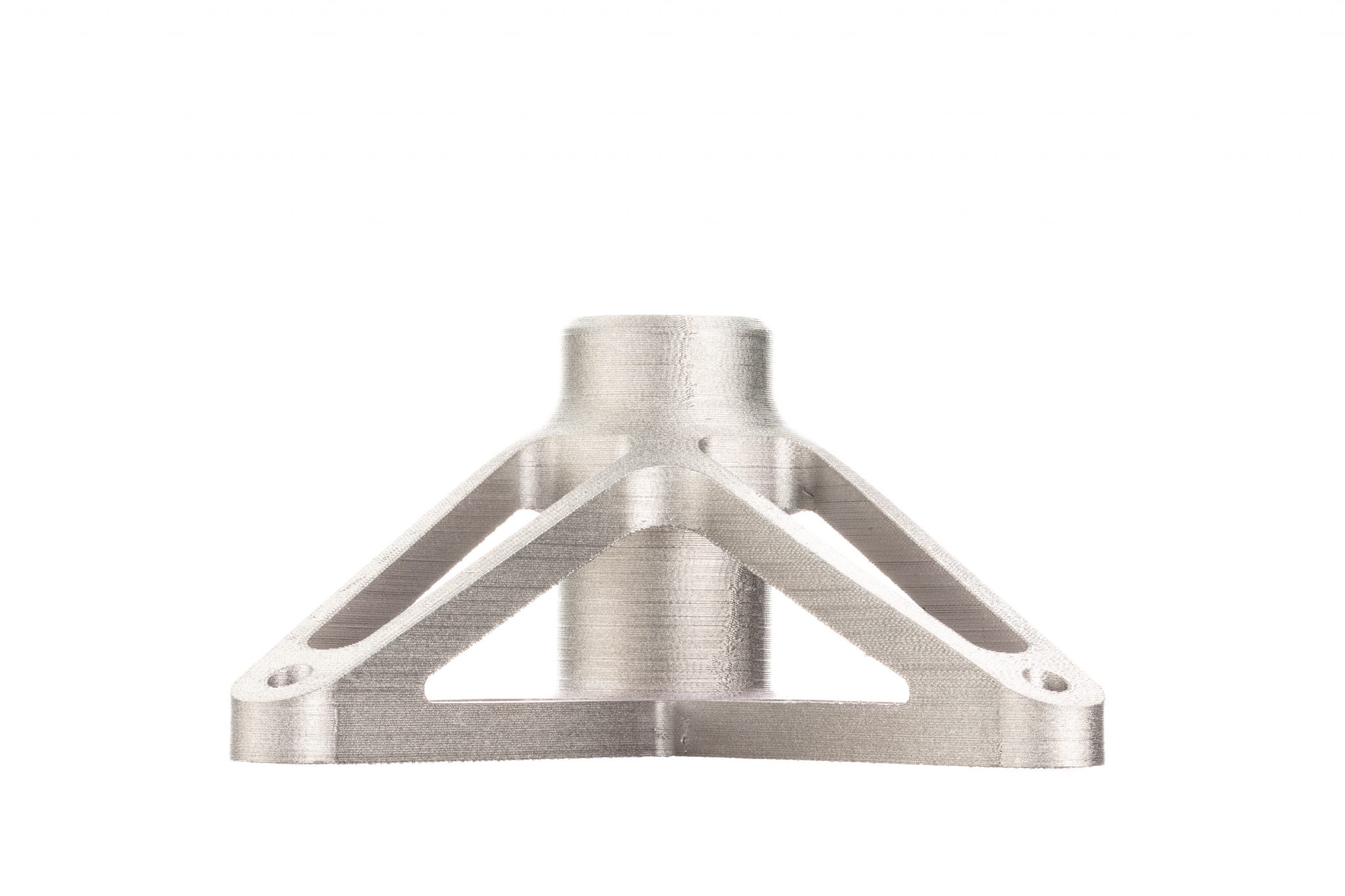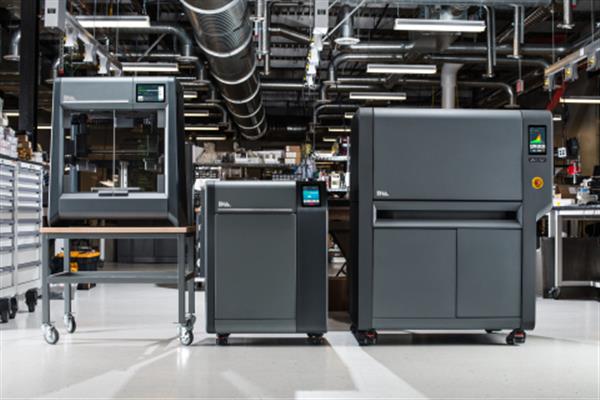The popular American television series, BattleBots, pits teams of skilled engineers from all over the world against one another in a dynamic robot combat tournament. Within this tournament, Boston-based competitors, Team SawBlaze, which consists of MIT engineering students and graduates, used metal 3D printing to efficiently create components for their battle-winning robot.
With help from Desktop Metal, Massachusetts-based metal 3D printing specialists, and metal additive Studio System, which includes a 3D printer, debinder, and furnace, Team SawBlaze utilized design flexibility and rapid iteration to produce structural steel components for their SawBlaze robot.

The SawBlaze battle bot
When designing a robot that will eventually go head-to-head with other heavily armed robots, teams must demonstrate their creativity, strategic skill, and engineering and driving abilities.
In order to address the performance factors such as weight, weaponry effectiveness, impact resistance, and controllability, SawBlaze was created with an offensive approach as it includes a diamond abrasive rescue saw blade and flame-thrower.
Positioned on a controllable rotating arm, the saw is able to attack at the front or back of the robot. Additionally, the flame-thrower emits flames at 350°C in the direction of the saw’s target, which enables “slash and burn” strikes to its opponents.
“In contrast to most BattleBots robots that apply brute force, SawBlaze applies precision damage. This strategy is much more difficult to execute,” said Jamison Go, SawBlaze Team Captain and Mechanical Engineer at Desktop Metal.
Battling time constraints with Studio Systems
With the shortest build calendar ever in BattleBot’s 2018 season, competitors were left with just a month to build and ship their robots. Considering the critical role of each component within SawBlaze’s mechanism, Captain Go saw an opportunity to use the Desktop Metal Studio System for rapid design iterations. This allowed the team more time spent on fine-tuning custom parts for the robot’s assembly. Captain go stated:
“Working against a limited development timeline, our processes must be extremely efficient in order to achieve an optimized and consistent strength-to-weight ratio as the robot moves and comes into contact with the competition.”
A key component affecting the overall performance of the SawBlaze robot is the backstop – a sub-assembly structural part that straddles and protects the saw blade. The backstop must be stiff, strong, corrosion and heat resistance as it absorbs multiple blows taken during battle.
Using the Studio System’s metal 3D printing capabilities, Team SawBlaze fabricated two low-alloy steel end pieces for the backstop which were fastened onto a metal cross-bar. The custom parts were also designed with “cut-outs” and a closed-cell infill pattern – which are sealed at the top and open at the bottom – to remove excess material.
This created a lightweight design while adhering to BattleBots 250 lbs robot weight restriction.

Advantages of the Desktop Metal Studio System
With a strict budget and a limited timeframe, Team SawBlaze identified in-house metal 3D printing as the most feasible option for part production.
The Desktop Metal Studio System, which has been granted two patents to support its unique layer technology, decreasing the cost and lead time needed through third-party manufacturers. Upon researching various fabrication methods, Team SawBlaze found that a CNC machining company would take 2-3 weeks to produce their custom parts at a price of $606.
Furthermore, the Direct Metal Laser Sintering (DMLS) fabrication method would have taken two weeks and cost the team $1285.
However, the Studio System fabrication method, capable of extruding metal rods – similar to FDM technology, produced the custom metal components in three days at a cost of $56. In addition, with the Studio System’s debinder and sintering furnace, post-processing of the components was easily completed.

As a result of implementing metal 3D printing technologies, Team SawBlaze has experienced a stronger and more endurant robot as SawBlaze has won 75% of its battles throughout the BattleBots tournament.
Want more of the latest 3D printing news? Subscribe to the 3D Printing Industry newsletter. Also, follow us on Twitter, and like us on Facebook.
Need a change of pace? Seeking new talent for your business? Search and post 3D Printing Jobs for opportunities and new talent across engineering, marketing, sales and more.
Featured image shows the SawBlaze robot. Photo via Desktop Metal.


